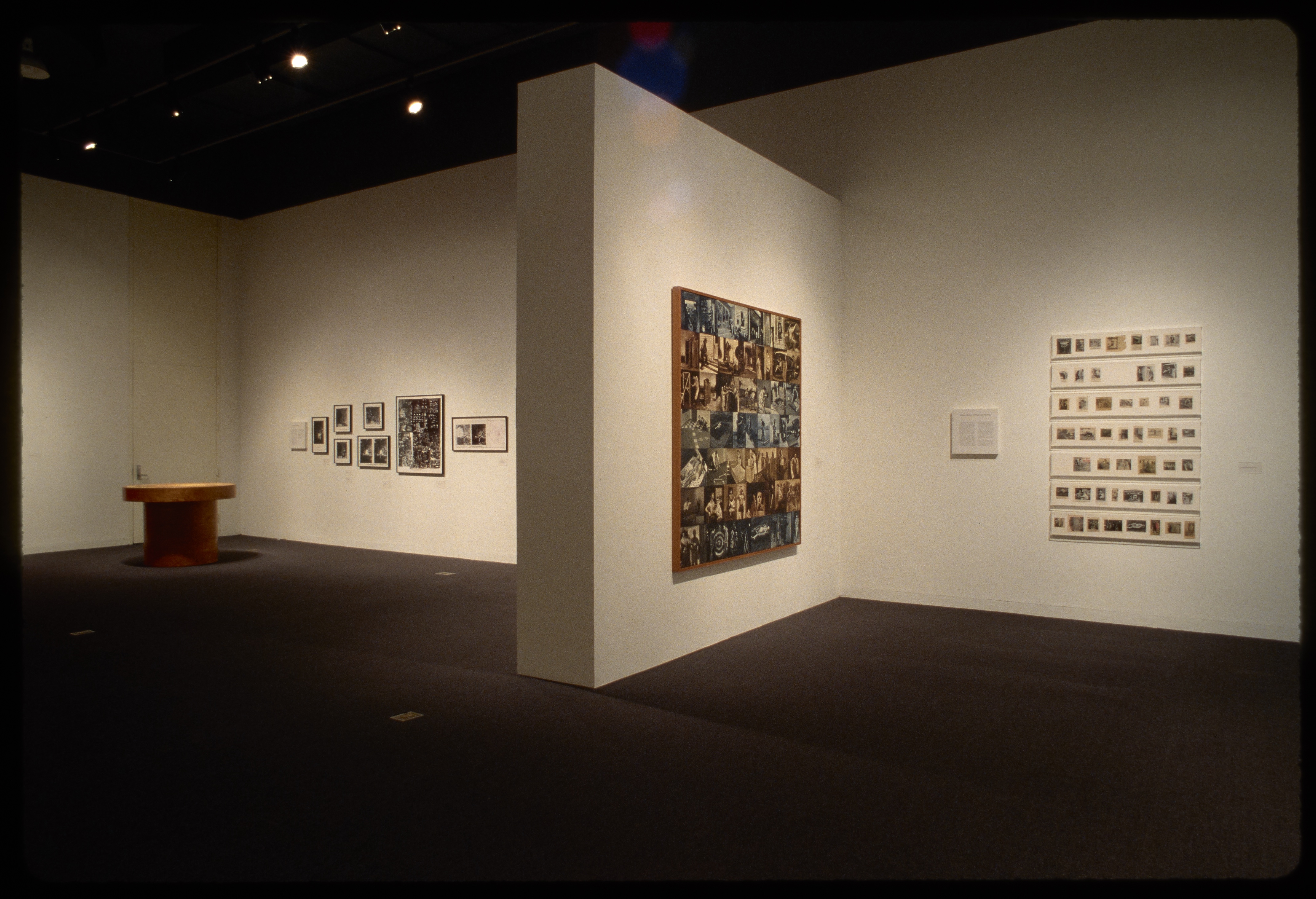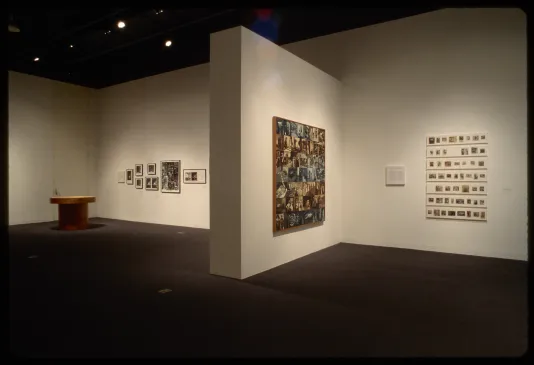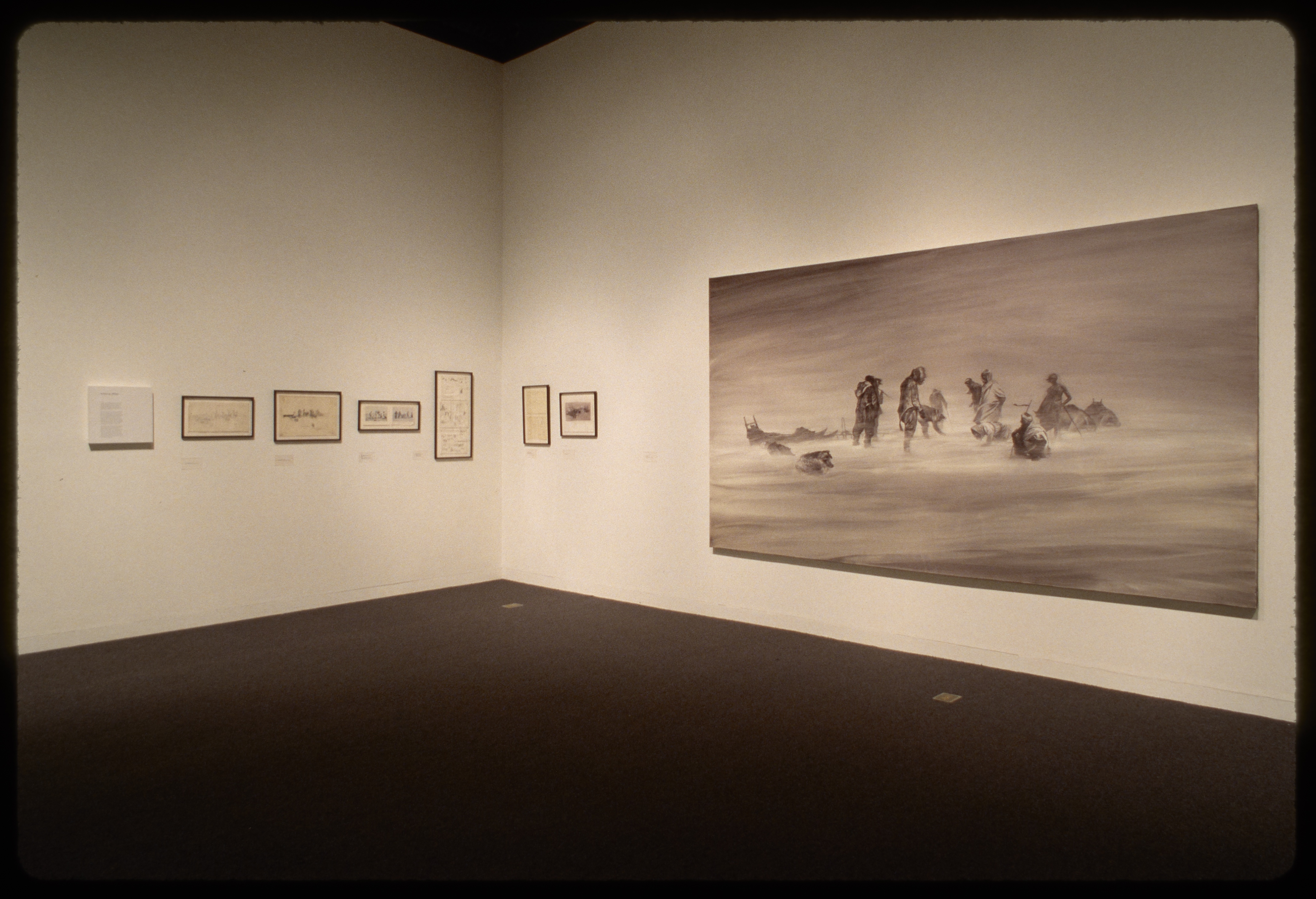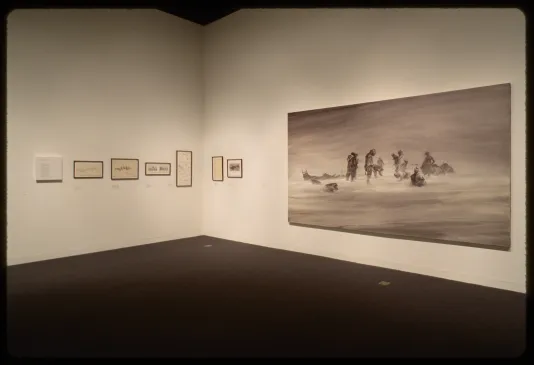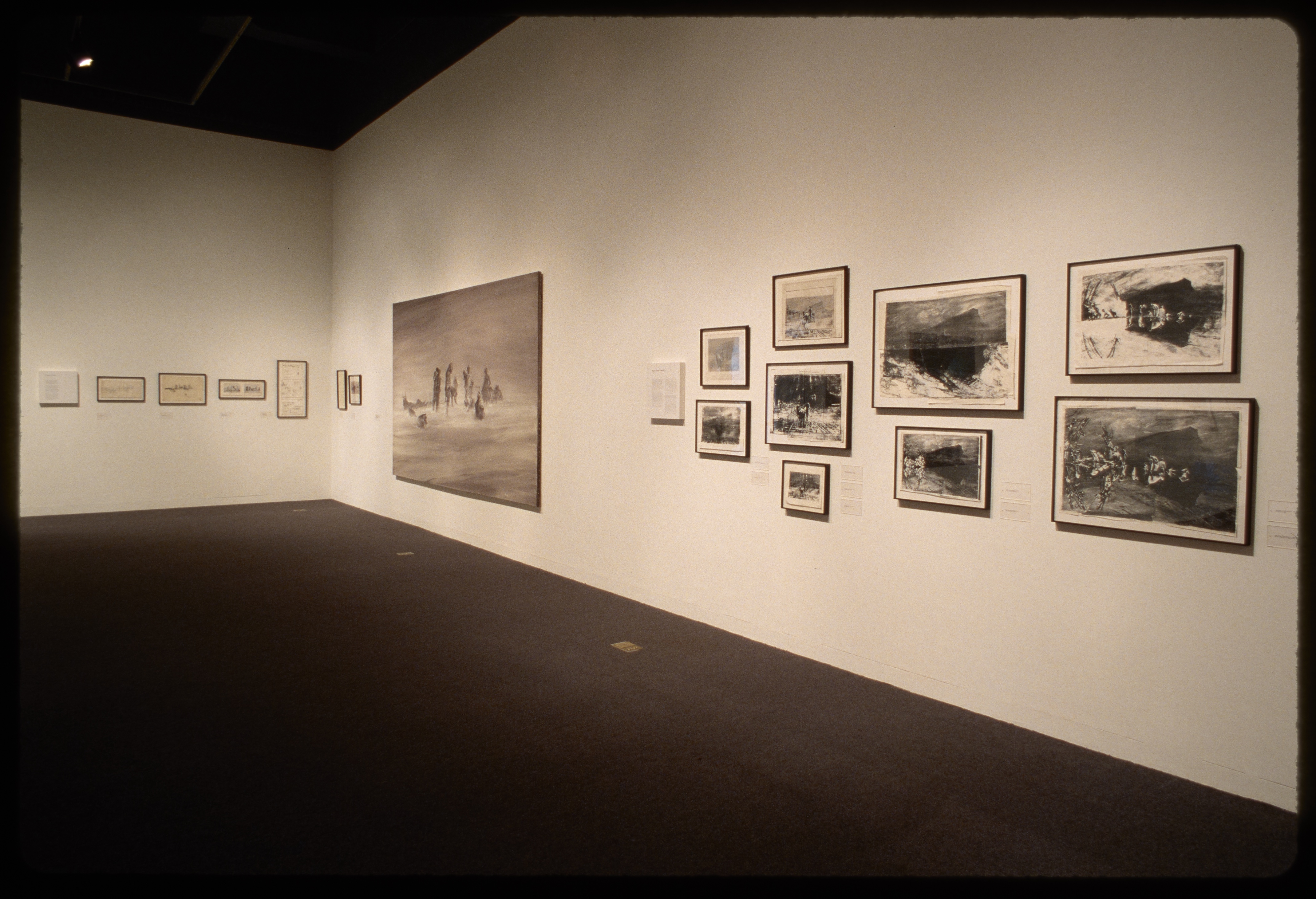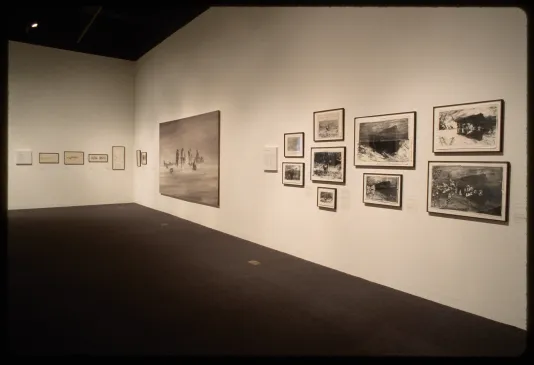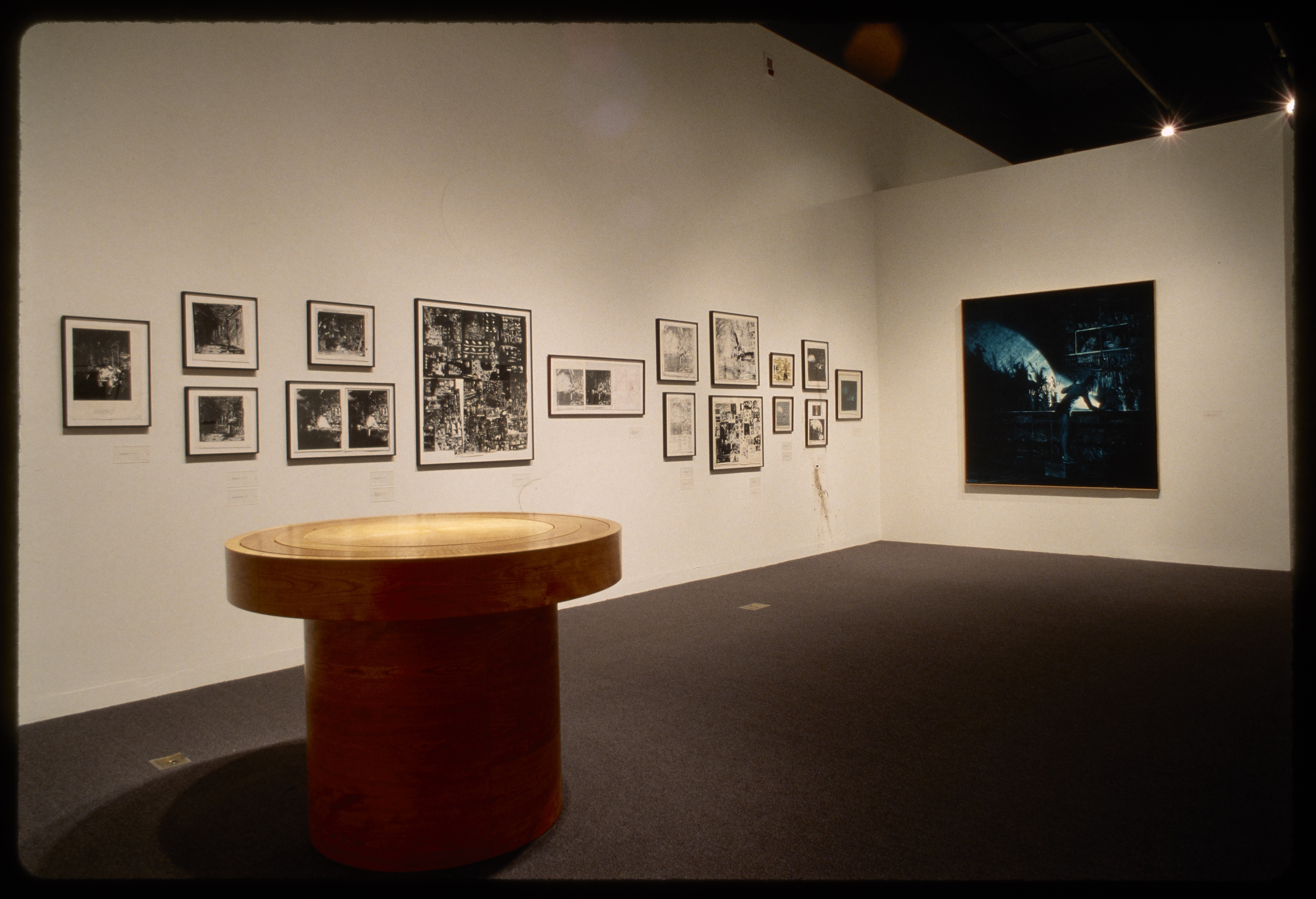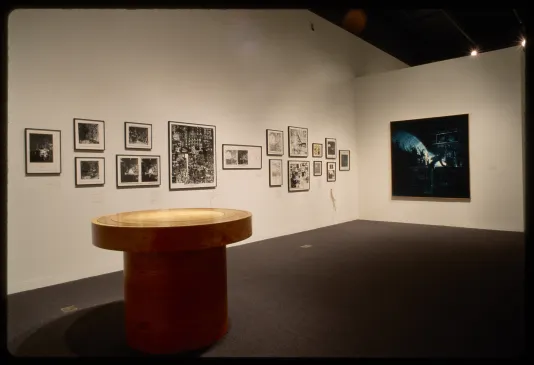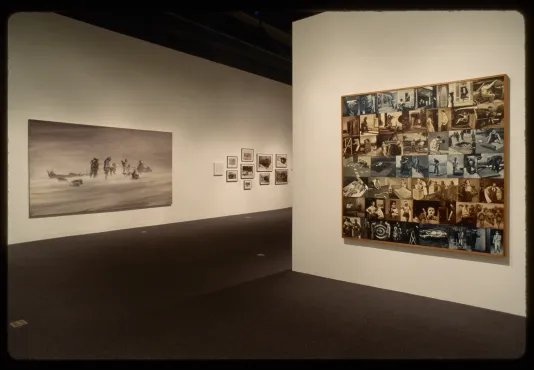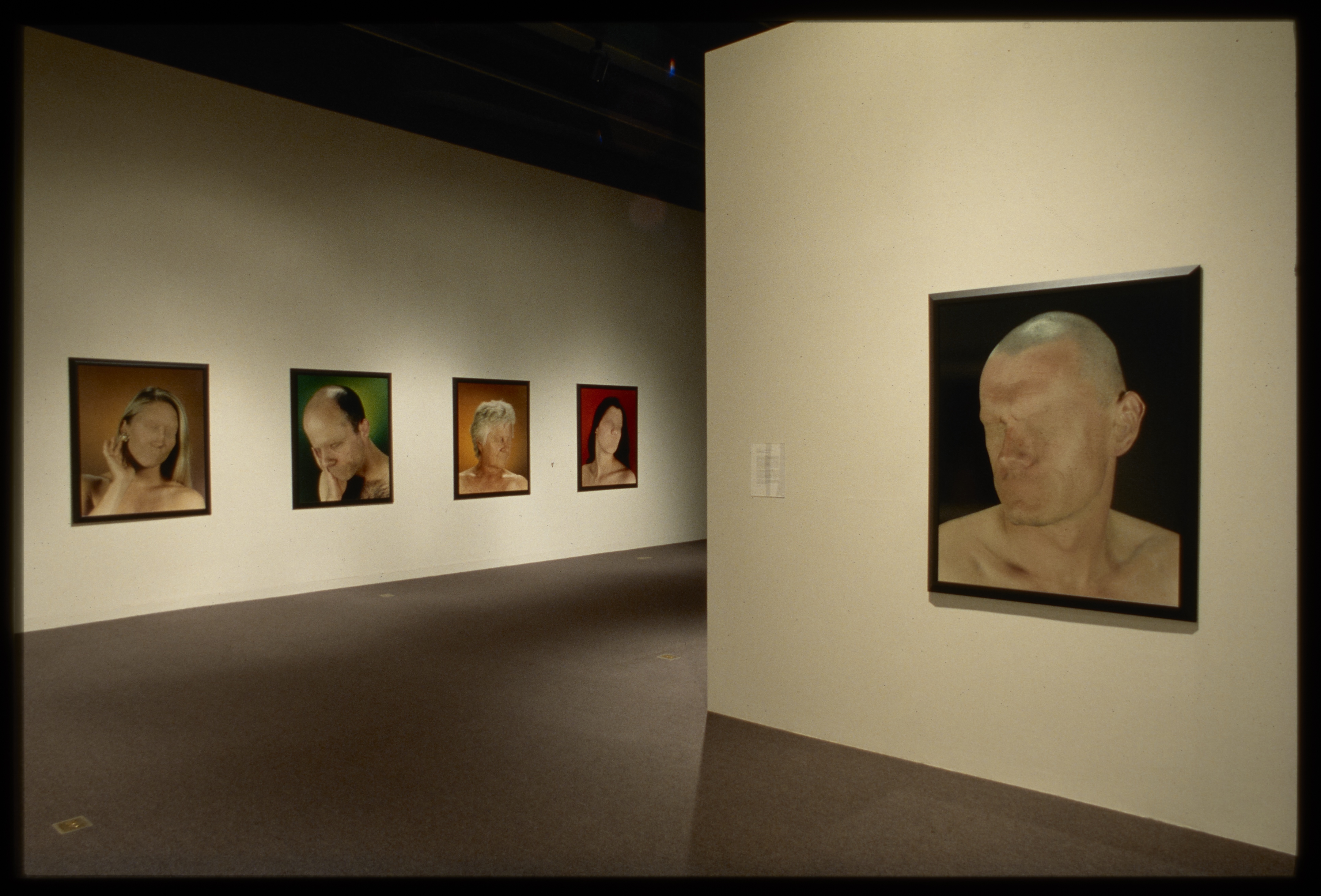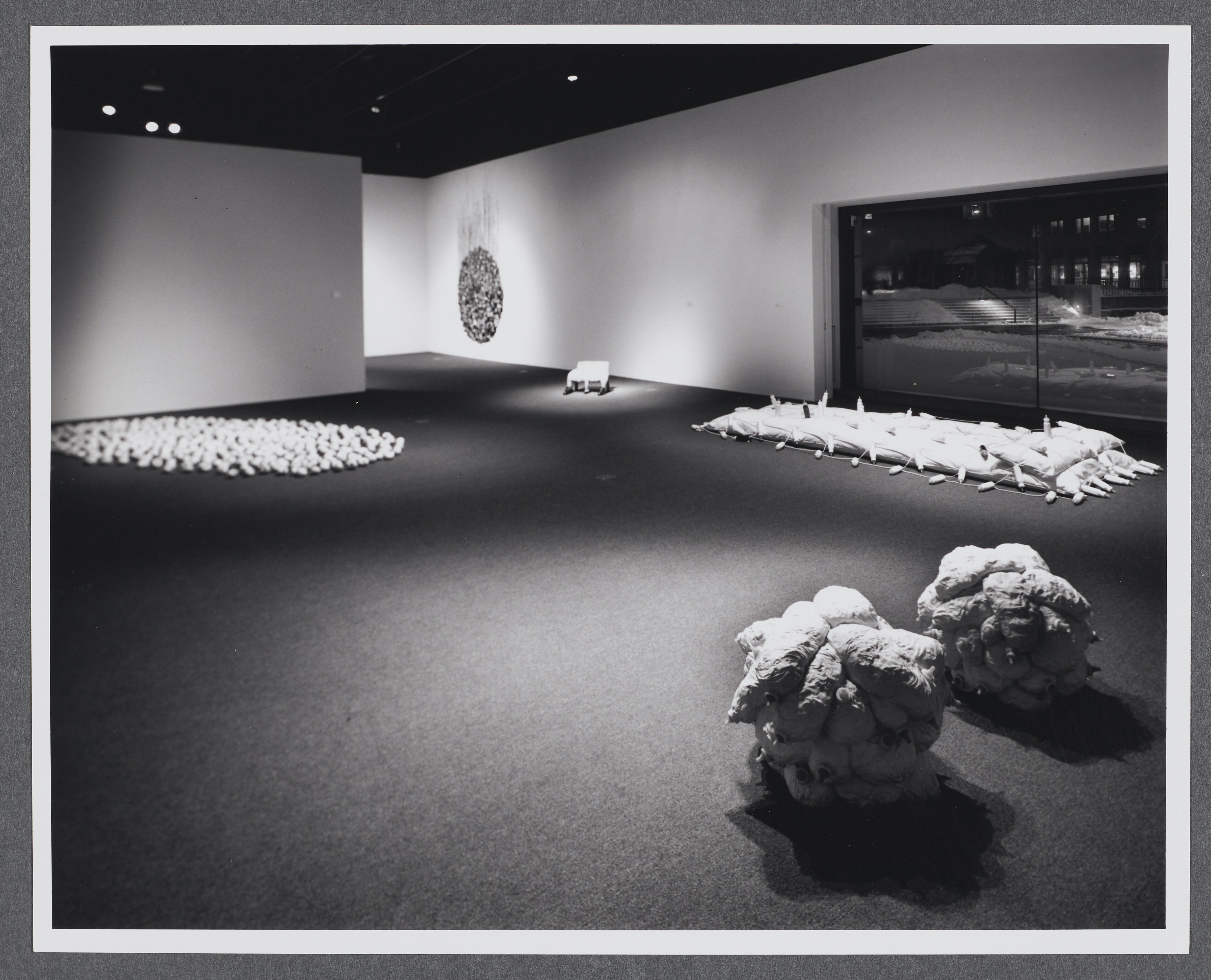Installation view, Mark Tansey: Art and Source, MIT List Visual Arts Center, 1991. Archival slide.
Mark Tansey: Art and Source
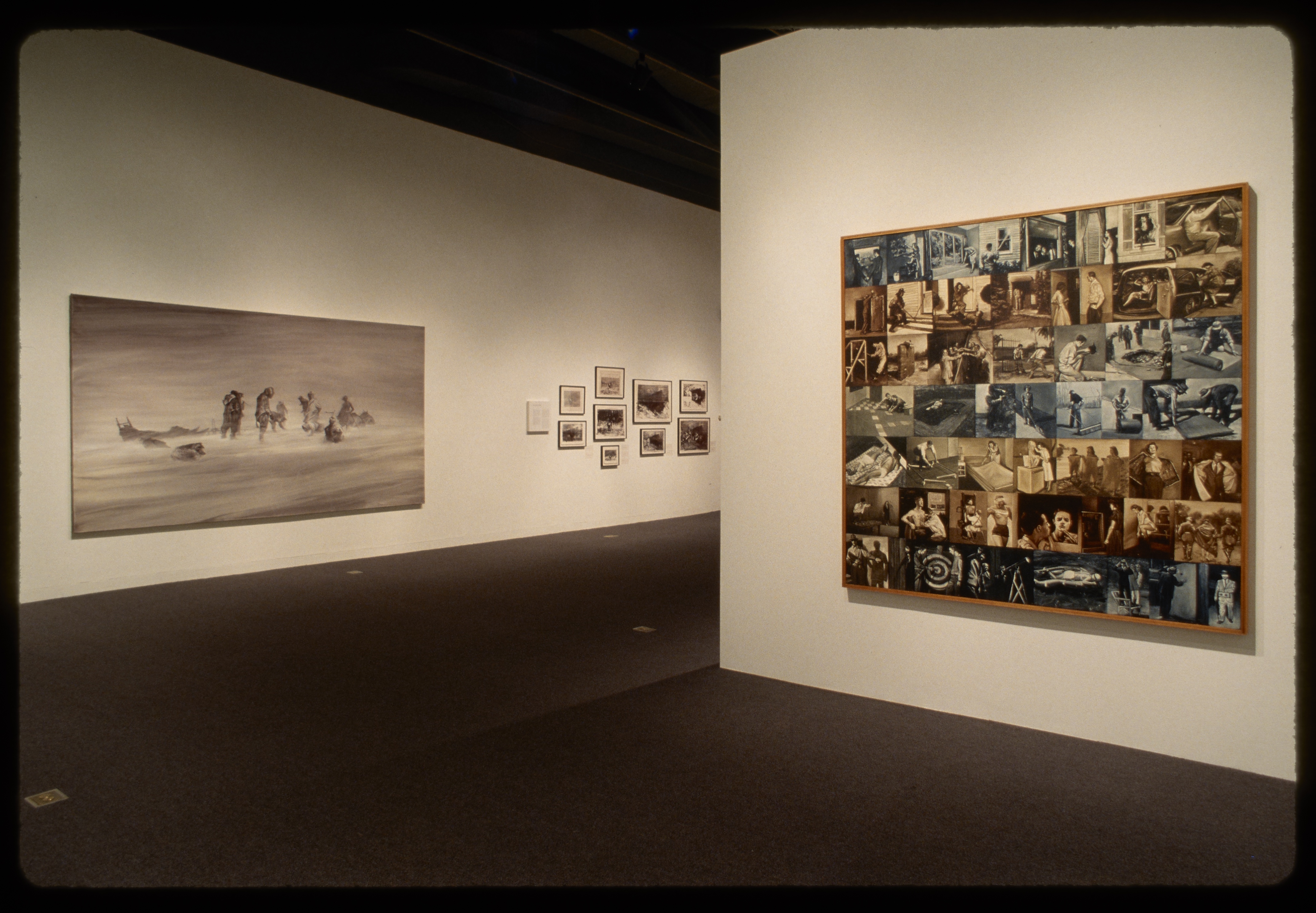
Mark Tansey’s meticulous pseudo-realist canvases are reminiscent of 19th-century history painting, yet the scenes he portrays depict a bewildering world of impossible juxtapositions of time and place.
This exhibition features four large-scale monochromatic paintings and more than 40 preparatory works and source materials by this innovative and important mid-career artist.
Appearing at first glance to be witty visual puns and one-liners – a band of desert nomads in a barren windswept landscape, for example – they are also complex meditations on the interplay of reality, illusion, and representation. “In a decade of mature work, Tansey has established an original vision that combines detailed narrative and precise realism in a … vigorous blend of philosophy, literature, and history,” states Patterson Sims, the curator of the exhibition and director for art and exhibitions at the Seattle Art Museum.
The four oil paintings featured in the exhibition capture the artists engaging combination of wit and insight. Tying these works together is Tansey’s conviction that our conception of “reality” is determined by the tools we use to represent and communicate experience – words, photographs, painted images, and so on – and that these descriptions are invariably incomplete, contradictory, deceptive, or otherwise inadequate. A Short History of Modernist Painting (1979-1980) presents a rich patchwork of sepia and black and white images that parade across the canvas like freeze frames from a 1950s newsreel and humorously undermine the most cherished notions of 20th century art. White on White (1986) describes the bizarre convergence of two bands of Bedouins and polar Eskimos in an ambiguous sand/snow-swept landscape. Mont Sainte Victoire (1987) reflects Tansey’s fascination with Paul Cezanne, the father of modern art, and plays on two of that artist’s best-known themes: his bathers and the mountain in the painting’s title. The Bricoleur’s Daughter (1987) shows a young girl secretly exploring a mysterious wonderland of bric-a-brac and tools on her father’s worktable.
Providing insight into the artist’s working and thought processes, the preparatory works and source materials in the exhibition rage from photographs, news clippings, and photocopies to collages and detailed graphite drawings. “Although the completed works are often rapidly executed,” explains Sims, “the generation of the imagery is an extended and elaborate process linking art historical quotation, bibliographic reference, and covert portraits.”
Sponsors
The exhibition was organized by the Seattle Art Museum with support from the National Endowment for the Arts, the Collector’s Forum, and the Helen Gurvich Fund of the Seattle Art Museum.
